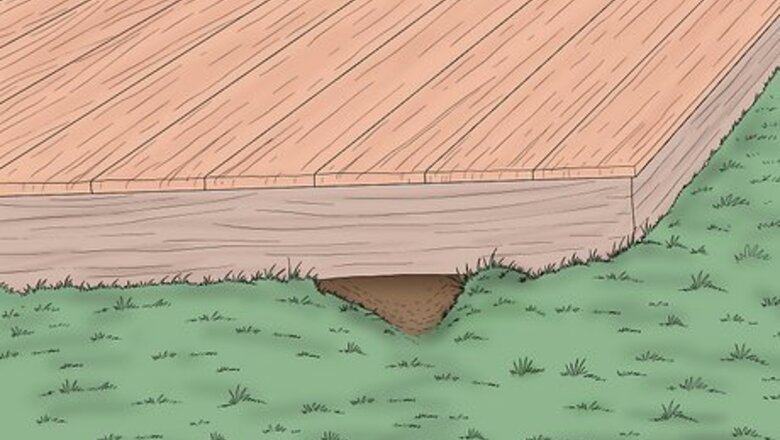
views
- Leave ammonia-soaked rags or used kitty litter near dens so the odors make the skunks leave. Apply a spray with capsaicin or castor oil spray as a deterrent.
- Put motion sensor lights outside to scare skunks as they leave or enter their dens. Leave a radio running on a porch or in a shed to drive skunks out.
- Remove food sources by covering your trash, keeping pet food inside, and picking up fruit and nuts in your yard.
Using Repellents

Look for a hole or entrance to a skunk den. Skunks may burrow their dens under porches or decks, beneath buildings, inside sheds or open garages, or under brush piles. If you’re not sure if a spot is a skunk den, fill the opening with newspapers. Check the opening after 2–3 days, and if the newspapers are disturbed, then the den is still active and a skunk is still there. If you find a skunk in your garage, leave it alone and open the garage door in the evening so it can leave on its own. If a skunk got into a window well, slowly lower a long board into the well and lean it at a 45-degree angle inside so the skunk can crawl out. Stand back from the window well in case the skunk gets frightened.
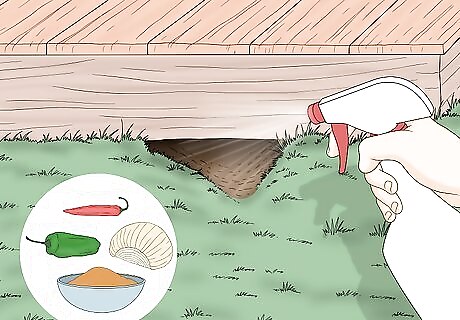
Try applying homemade capsaicin or castor oil spray. Because skunks have a strong sense of smell, strong odors like hot peppers or castor oil can deter them. No matter which repellent you use, put it in a spray bottle and apply it around the den entrance every 3–5 days until the skunk leaves. For a homemade capsaicin spray, boil 2 US quarts (1.9 L) of water with 1 chopped onion, 1 chopped jalapeno pepper, and 1 tbsp (5.3 g) of cayenne pepper for 20 minutes. Strain the solution through a cheesecloth into your spray bottle once it’s cool. To make castor oil spray, combine 8 fluid ounces (240 ml) of dish soap, 8 fluid ounces (240 ml) of castor oil, and 1 gallon (3.8 L) of water.
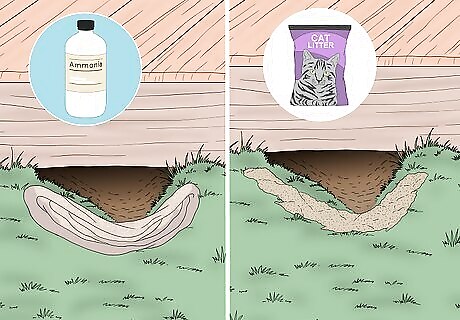
Leave ammonia-soaked rags or used cat litter near den entrances. Dip a few rags into ammonia, and place them around the entrance of the den. Alternatively, if you have a cat, take some of their used litter and distribute it in and around the skunk den’s entrance. The strong smell of the litter or the ammonia will deter the skunks from coming back. Replace the litter or rags every few days because their odor will start to fade away. Ammonia-soaked rags can create strong fumes that can irritate your lungs and eyes, so keep them away from any pets or children.

Install a motion sensor light near problem areas. Position the light so it points directly at the entrance to the skunk den. When the skunk enters or leaves the den, the bright light will frighten them once it turns on and keep them from sticking around. Motion sensor lights also attract fewer bugs to your yard, which can limit a skunk’s food sources.
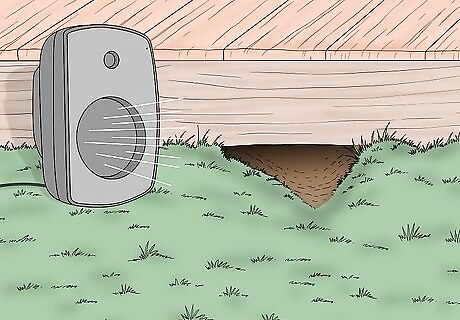
Play a radio continuously near a skunk den. Place the radio near the entrance of a skunk den or on a porch they’re hiding underneath. Turn the radio on at a low or moderate volume, and leave it playing throughout the day and night. Skunks prefer dark and quiet places to sleep during the day, so the constant noise could encourage them to leave the area.
Removing Food Sources
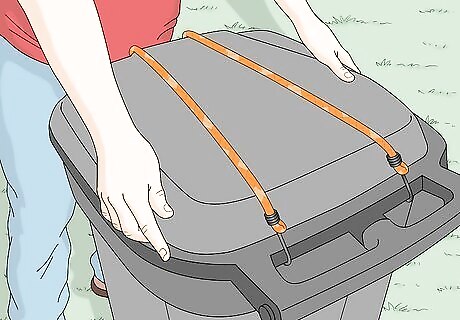
Cover your garbage with tight-fitting lids. If you keep your garbage cans outdoors, seal them completely and ensure the lid doesn’t easily lift off the top. If you can, keep your garbage cans in a secure place, like a garage or shed, until collection day. That way, skunks are less likely to smell any food scraps inside and come searching for a meal. Take trash cans out in the morning on collection day rather than the night before so they don’t attract skunks to your yard.
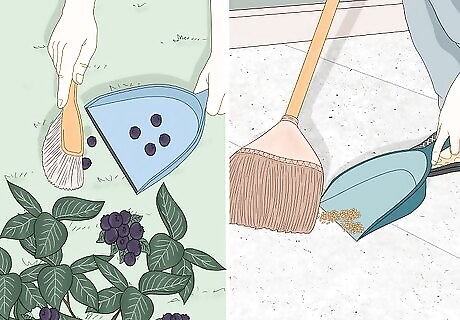
Clean birdseed, fruit, and nuts off the ground. If you have a bird feeder in your yard, install a feeder tray underneath to prevent the seeds from falling to the ground. Then, check your yard for any fruit or nuts that have fallen off of plants, and throw them away so skunks don’t come foraging for them. If you’re frequently seeing skunks in your yard, temporarily take your bird feeders down until they leave.
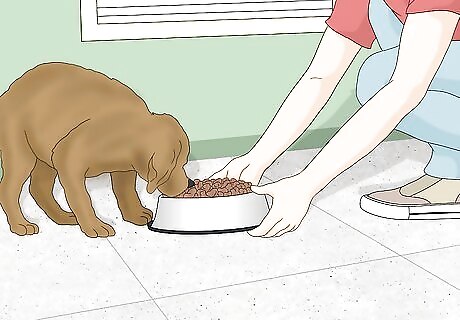
Feed pets indoors. When it’s time to feed your pets, fill up their bowl inside and keep the bag of pet food indoors. Store the pet food inside as well so curious skunks don’t smell it and try to get an easy meal. If you do need to feed pets outdoors, empty the bowl or move it inside when your pet finishes their meal.
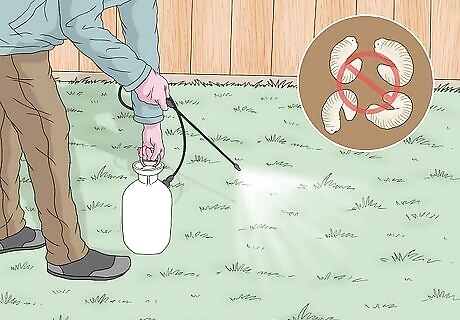
Treat your lawn with insecticides to remove grubs. If a skunk has dug up holes in your yard, it may mean there are grubs living in the soil underneath. To get rid of the grubs already in your soil, use a curative insecticide that contains trichlorfon in late summer or early fall. To prevent grubs from establishing in your yard, use an imidacloprid or halofenozide preventative pesticide in the spring instead. Let the pesticides dry completely before letting any person or pet go through your yard because they could cause irritation. Curative insecticides are ineffective against pupae, and preventative insecticides will not harm grubs that are already established in your yard. Insecticides could potentially remove beneficial insects from your yard, so use them sparingly.
Keeping Skunks Out

Put a one-way door at the den entrance to stop skunks from returning. Place the one-way door against the entrance hole to the skunk den, and seal any other areas where the skunk could get out with wire mesh. Stand a few thin sticks vertically inside the door. Wait 3–4 days, and check if the sticks are knocked over from the skunk leaving. Once the sticks are knocked down, the skunk has left and won’t be able to get back inside. If you notice the skunk has dug a new hole or entrance to their den, plug it with rocks, soil, or wire mesh.

Cover openings and surround areas with wire-mesh fencing. Choose ⁄4 in (0.64 cm) wire mesh to prevent skunks from getting through the openings. Secure the mesh around the bottoms of porches, window wells, and foundation openings. For gardens or chicken coops, make the fence 3 feet (0.91 m) tall to keep skunks from climbing in. Bend the bottom 1 ⁄2–2 feet (46–61 cm) of fencing to a 90-degree angle and bury it underground to stop skunks from digging. Wait until you remove all the skunks before closing off areas where they build dens, or else they may get trapped inside. Sprinkle flour around the entrance of the den and check for footprints after dark. If the flour is undisturbed, wait another hour for the skunk to leave. Skunks leave their young unattended in their dens from late spring to late summer, so avoid covering den entrances until you see the babies following their mother out.

Remove excess foliage and yard clutter. Trim any overgrown plants or shrubbery so the foliage is off the ground and limits the skunk’s hiding spots. Then, get rid of any loose boards, large rocks, or yard debris that are lying on the ground as well. If you have a wood pile in your yard, stack the logs tightly together so they’re 18 inches (46 cm) off the ground. If you have a compost bin, avoid putting kitchen scraps inside because it may attract more skunks.
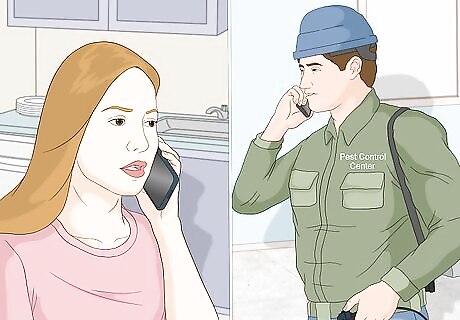
Contact a pest removal service to remove skunks if you’re unable to. If you have trouble accessing skunks or they keep returning, contact a professional pest control specialist and let them know the issue. They will be able to humanely trap and relocate the skunk so it isn’t an issue anymore. While it is possible to trap a skunk, it may be illegal in your area and you could potentially get sprayed. Contact your state’s natural resources department and ask if you want to trap skunks. Otherwise, just leave it to the pros. After pest control removes the skunk, be sure to cover any den entrances to prevent other skunks from getting in.
















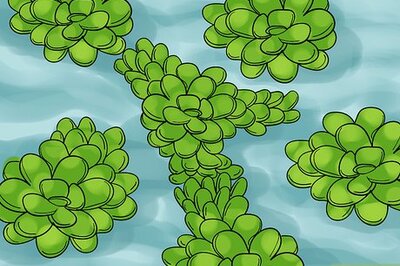

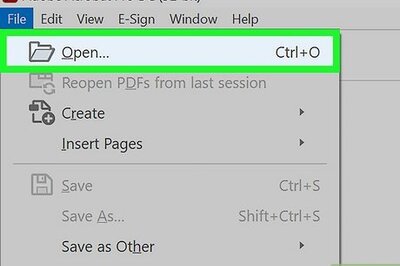
Comments
0 comment